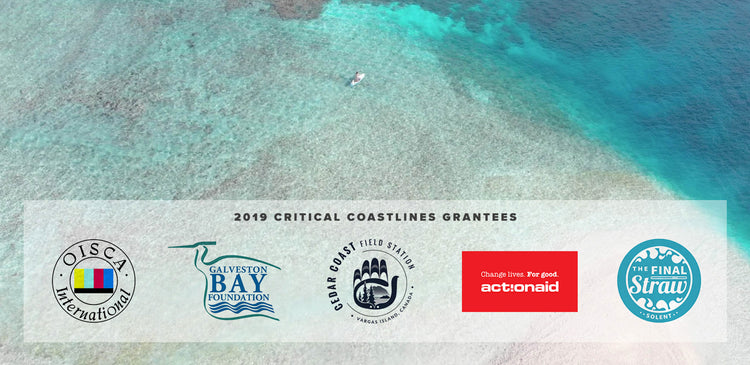15 years ago, the news broke across our TVs that a quarter of a million people were killed, and over 1.7 million people were displaced in an instant by the 2004 Indian Ocean Tsunami.
This single event kickstarted KEEN’s disaster philanthropy—and we’ve been learning more about the threats coastal peoples face and finding ways to give back ever since; from disaster relief in Japan, the Philippines, and Texas to mangrove reforesting in Banda Aceh, Indonesia. What we know for certain is that 40% of the global population lives in coastal zones, harder times are still ahead, and that many of the issues are unprecedented and complex.
Right now, the U.S. Gulf Coast is still rebuilding after being flattened by violent hurricanes, villages in Alaska and the entire nation of Kiribati are being slowly devoured by a rising Pacific, waterfowl migrating across Europe are plagued by bellies full of plastic flotsam, and communities on the shores of the Andaman Sea choose between the integrity of their mangrove swamps and cash-in-hand on a daily basis.
"Through the rubble, felled mangroves, and garbage, we see children, scientists, farmers, innovators, and heroes of all varieties diving into the hidden solutions behind our biggest seaside threats."
But through the rubble, felled mangroves, and garbage, we see children, scientists, farmers, innovators, and heroes of all varieties diving into the hidden solutions behind our biggest seaside threats.
Critical Coastlines, our special program created in homage to the 2004 Tsunami and all that it forebodes, is funding five amazing non-profit groups, each working on a different coastline with their own solutions to a local problem. Themes that run through each of these grantees are coastal conservation, economic sustainability, pollution cleanups, scientific research, and direct community involvement. All of these themes are critical to helping vulnerable coasts build resilience to a changing planet.
The below grantees—and thousands of other groups like them—are doing the heavy lifting to break the inertia of complacency while helping all of us to learn more about climate mitigation, sea-level rise, oceanic pollutions, and the people that face an uncertain future.
2019 KEEN Critical Coastlines Grant Recipients

INDIAN OCEAN COASTLINE: ACTIONAID INDIA
ActionAid India’s “Coastal Resilience in the Sundarbans” supports the economic sustainability of families in the Sundarbans (a UNESCO World Heritage Site) within the town of Gosaba, India. The Sundarbans, the world’s largest mangrove forest and a huge barrier against rising sea levels and storm surges, has shrunk to one-third of its original size due to unregulated development and pollution. This program helps reduce the unsustainable impacts of tourism, creates community-based “Environmental Watch Groups” that promote scientific and traditional knowledge, and develops a coastal green belt sustaining fishing and tourism-based livelihoods all while addressing the erosion and deforestation.

WESTERN PACIFIC COASTLINE: OISCA INTERNATIONAL
OISCA International’s “Coastal Forest Restoration after the Tohoku Tsunami” establishes 500,000 black pine and broadleaf seedlings to create a 100-hectare coastal area to help revitalize a community devastated by the March 11, 2011, tsunami in Natori City, Japan. This project is owned, designed, and implemented by the local farming community. After the tsunami, the local farming community, whose farmlands had been shielded by the former coastal vegetation, are now exposed and vulnerable from strong winds, salt damage, and blown sand from the coast, thus affecting their source of livelihood.

EASTERN PACIFIC COASTLINE: CEDAR COAST FIELD STATION
Cedar Coast Field Station’s “Pacific Salmon Monitoring Program” preserves the ecological health of Vargas Island’s Pacific coast—traditional territory of the Ahousaht First Nation, and within the globally recognized Clayoquot Sound UNESCO Biosphere Reserve—through place-based research and education. The program monitors sea lice infestations on young migrating wild salmon, which are crucial to maintaining a balanced coastal ecosystem. The amount of sea lice found on salmon last year was an unprecedented threat to their survival. This imbalance is mostly caused by warming water temperatures and the presence of open net finfish aquaculture facilities, compounded by an already degraded habitat caused by logging, aquaculture, and commercial fishing.

EASTERN ATLANTIC COASTLINE: THE FINAL STRAW SOLENT
Final Straw Solent’s “Reducing Single-use Plastics in Schools Program" works with local schools and businesses to reduce single-use plastics along the southern coast of the UK, known as the Solent. Children will be educated on plastics and their impact on our environment and wildlife, and later surrounding marine-centered businesses, like cruise ship operators, will be asked to create plastic-free or plastic-conscious business models. As a major shipping lane for passenger, freight, and military vessels and incredibly important to all coastal recreation, the Solent is of great ecological and economic importance because of the coastal and estuarine habitat, and is often celebrated for its birds and marine mammals.

WESTERN ATLANTIC COASTLINE: GALVESTON BAY FOUNDATION
Galveston Bay Foundation’s “Students in Action Program” combines coastal restoration, environmental education, and citizen science initiatives for local Houston-Galveston students who, in turn, gain knowledge of local wetland habitats and environmental careers. Students help build new oyster reef breakwaters, replant marshes, remove invasives, and pick up trash, thereby helping decrease shoreline erosion and combat hurricane and rising sea level impacts. The largely underrepresented urban youth come from one of the most diverse and climate-vulnerable cities in the nation, sitting at sea level and at the mouth of a massive pollution stream originating as far away as Dallas. By sparking interest in environmental services careers and restoring estuaries in Galveston Bay, local knowledge and passion for the Galveston Bay watershed is ensured for future generations.
Since 2003, we’ve donated more than $19 million in cash and in-kind donations to non-profit organizations and open-space initiatives around the world, including grants for programs that build strong communities and inspire responsible outdoor participation. Learn more about our KEEN Effect Grant Programs.













